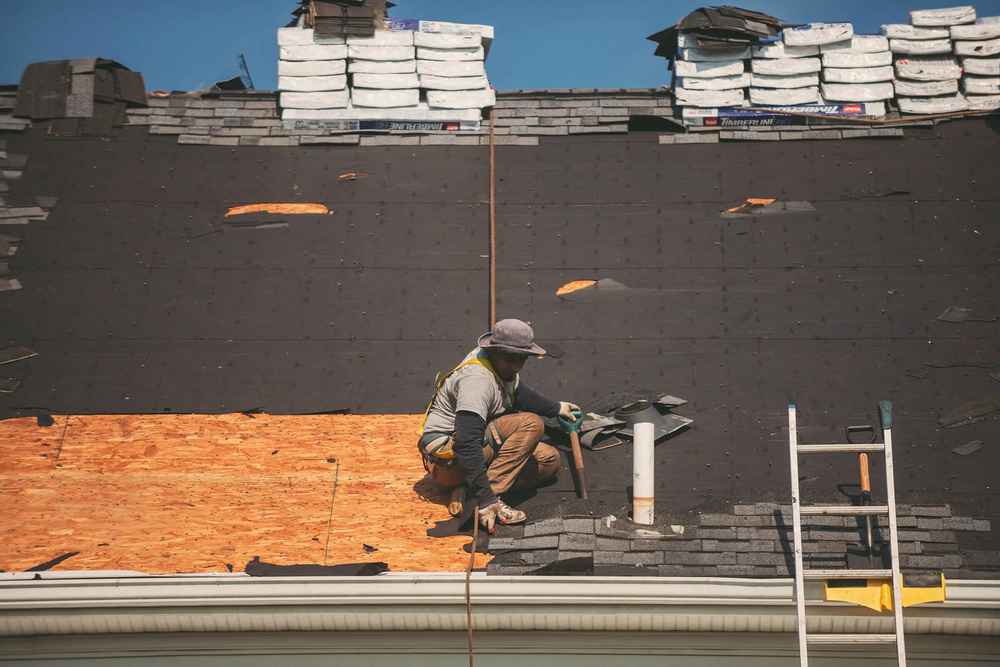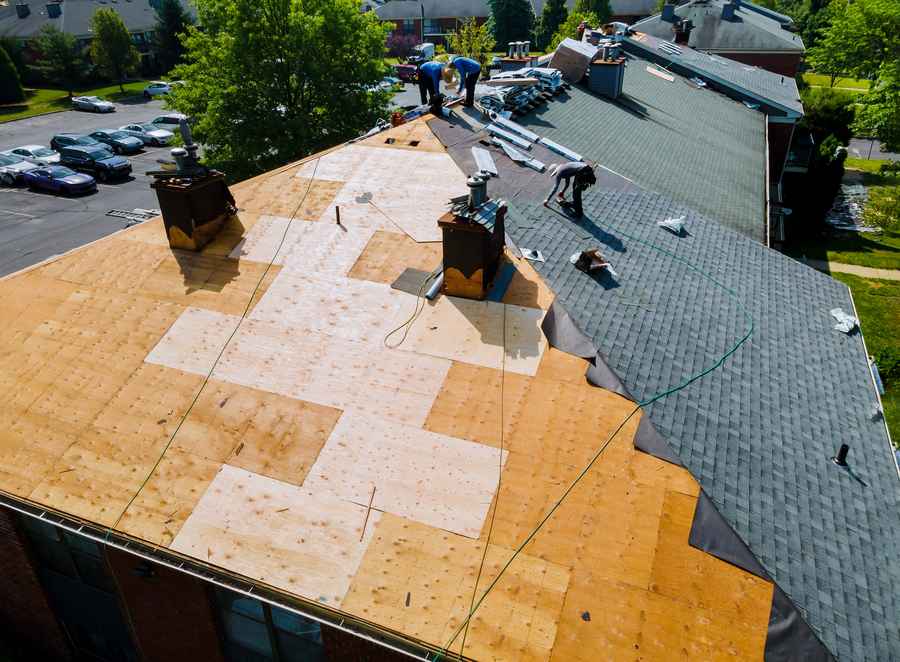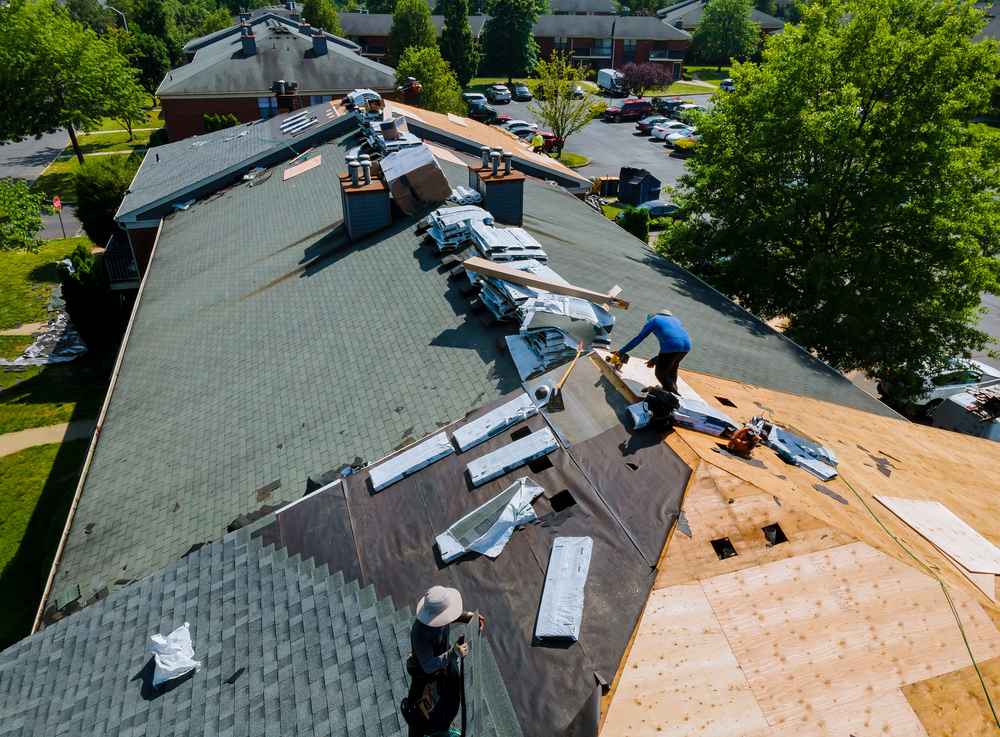Maryland homeowners know that winter here isn’t just about cold temperatures; it’s about constant fluctuation. One week can bring a hard freeze, and the next can swing into the mid-40s. These frequent freeze-thaw cycles peak between late December and early March, when temperatures drop below freezing overnight and rise during the day. While this back-and-forth pattern may feel normal for the Mid-Atlantic, it can take a serious toll on your home’s exterior, especially your roof.
The roof is your home’s first line of defense, but it’s the layer you don’t see, your roof underlayment, that does some of the most important work during Maryland’s harsh winter transitions. Snowmelt refreezing under shingles, ice dams forming along the edges, and moisture repeatedly expanding and contracting can quickly break down a roof system that isn’t properly protected beneath the surface.
At Home Source Roofing, we see the damage freeze/thaw cycles can cause every year. As a family- and veteran-owned roofing company, we bring decades of experience, technical expertise, and a doctor-like diagnostic approach to every home we work on. Understanding the purpose of underlayment and why it’s so crucial for Maryland’s climate helps homeowners make confident, informed decisions about their roof’s long-term protection.
Why Roof Underlayment Matters More Than Most Homeowners Realize
Roofing underlayment is the barrier installed directly over your roof deck and beneath the shingles, metal panels, or tiles. It acts as a secondary defense system, reinforcing the areas your primary roofing material can’t always protect.
A high-quality underlayment:
- Shields your roof deck from moisture and wind infiltration
- Prevents water intrusion during storms or before shingles fully seal
- Adds a layer of insulation against temperature swings
- Helps stop leaks caused by ice dams and snow buildup
- Lengthens the overall lifespan of your roofing system
Without the right underlayment, your roof is vulnerable the moment Maryland’s winter weather patterns shift. Freeze/thaw cycles are especially damaging because they repeatedly force roofing materials to expand and contract, something shingles alone weren’t designed to handle.

How Maryland’s Freeze/Thaw Cycles Impact Your Roof
The freeze/thaw process is simple in theory but extremely destructive in practice. Here’s how it affects roofing systems across Maryland:
1. Moisture Seepage and Expansion
When temperatures warm during the day, the snow on your roof melts. That meltwater can run under shingles or settle around nail holes. When temperatures drop again at night, that moisture freezes, expands, and forces shingles upward or apart. Over time, this loosens the roofing system and exposes the deck.
2. Formation of Ice Dams
Maryland’s frequent daytime melting and nighttime freezing create the perfect conditions for ice dams, those thick ridges of ice that trap water on your roof. As trapped water backs up under shingles, underlayment becomes your only protective barrier. If the underlayment is thin, old, or improperly installed, water intrusion becomes almost guaranteed.
3. Accelerated Material Fatigue
The constant shifting between warm and cold accelerates the breakdown of roofing materials. Even premium asphalt shingles or metal panels can’t fully offset this cycle alone. Underlayment absorbs stress, reinforces weak points, and reduces how often your roof must expand and contract.
The Role of High-Quality Underlayment in Maryland’s Climate
Homeowners often think of underlayment as optional, but in Maryland’s winter environment, it’s one of the most critical components of a long-lasting roof. At Home Source Roofing, we install underlayments that are specifically designed to withstand the freeze/thaw pattern common throughout the state.
Here’s how the right underlayment protects your home:
Acts as a Moisture Barrier
Synthetic or rubberized underlayments offer superior waterproofing. When water sneaks beneath shingles—whether from melting snow, blown-in snow during storms, or thaw/refreeze cycles—the underlayment blocks it from reaching the wood deck.
Provides Ice Dam Protection
Modern underlayment systems include ice-and-water shield materials, which adhere tightly to the roof deck and self-seal around nails. This feature is essential for eaves, valleys, and low-slope sections where Maryland ice dams love to form.
Adds Thermal Stability
Underlayment helps moderate temperature swings beneath the roofing material, reducing expansion stress and slowing the aging process of the entire system.
Strengthens Roof Lifespan
When properly installed, durable underlayment increases the longevity of asphalt shingles, metal roofing, cedar, and slate, making it a smart investment no matter what roof type you choose.

Why Home Source Roofing Is the Right Partner for Maryland Homeowners
At Home Source Roofing, we approach roofing like a doctor approaches a diagnosis. We don’t guess, we assess, identify, explain, and provide proof of the issue before recommending the right solution.
Our roofing services include:
- Asphalt shingle roofing
- Metal roofing systems
- Cedar and slate roofing
- Storm damage restoration
- Commercial roofing solutions, including EPDM, BUR, TPO, modified bitumen, and more
- Gutters, siding, windows, doors, solar installation, and exterior upgrades
Our team understands the unique challenges Maryland homeowners face, especially during winter. Our team works quickly, accurately, and with full transparency, ensuring your roof is ready for whatever the season brings.
Ready to Learn More?
If you want to protect your home from Maryland’s freeze/thaw cycles, your roof’s underlayment is the best place to start. Contact Home Source Roofing today for a professional inspection or a detailed evaluation of your current roofing system. We’ll help you strengthen your home from the inside out, so you can stay safe, dry, and confident through every season.



